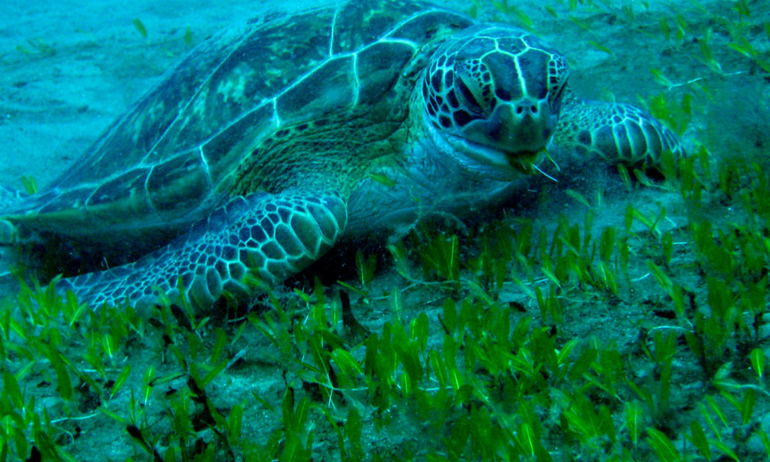
New field guide on invasive seagrass flowers
Dutch Caribbean Nature Alliance (DCNA), Wageningen University & Research
The invasive seagrass Halophila stipulacea, originating from the Red Sea and Western Indo-Pacific, has been successfully invading the Mediterranean Sea since 1894 and the Caribbean Sea since 2002. It was shown to outcompete native seagrass species and affect local ecosystem functioning.
In a new paper, WUR PhD candidate Fee Smulders found that so far, only male flowers have been described of this successful invasive seagrass species in the Caribbean Sea. Female flowers and fruits have not been reported. This means that fragmentation and fast clonal growth may be the only factors explaining its current success, without genetic adaptation capacity. This needs to be taken into account in further studies studying H. stipulacea expansion.

In-depth monitoring of reproductive structures in invaded seagrass meadows, both in the Mediterranean and the Caribbean Sea, is important to assess further invasion potential.
Because the fruits and flowers of H. stipulacea have been misidentified in the past, we have developed a field guide with a dichotomous key, to take into the field and easily identify the various structures by eye. We call upon (citizen) scientists to keep an eye out underwater when they are in the Caribbean, to be able to predict future invasion success of this species.
– Fee Smulders
The field guide can be found in the supplementary material of the paper below, and reports can be made in the online global database seagrassspotter.org.
Find out more by reading the full report, available on the Dutch Caribbean Biodiversity Database.
Text: Fee Smulders
Photos: Kai Wulf; Henkjan Kievit
